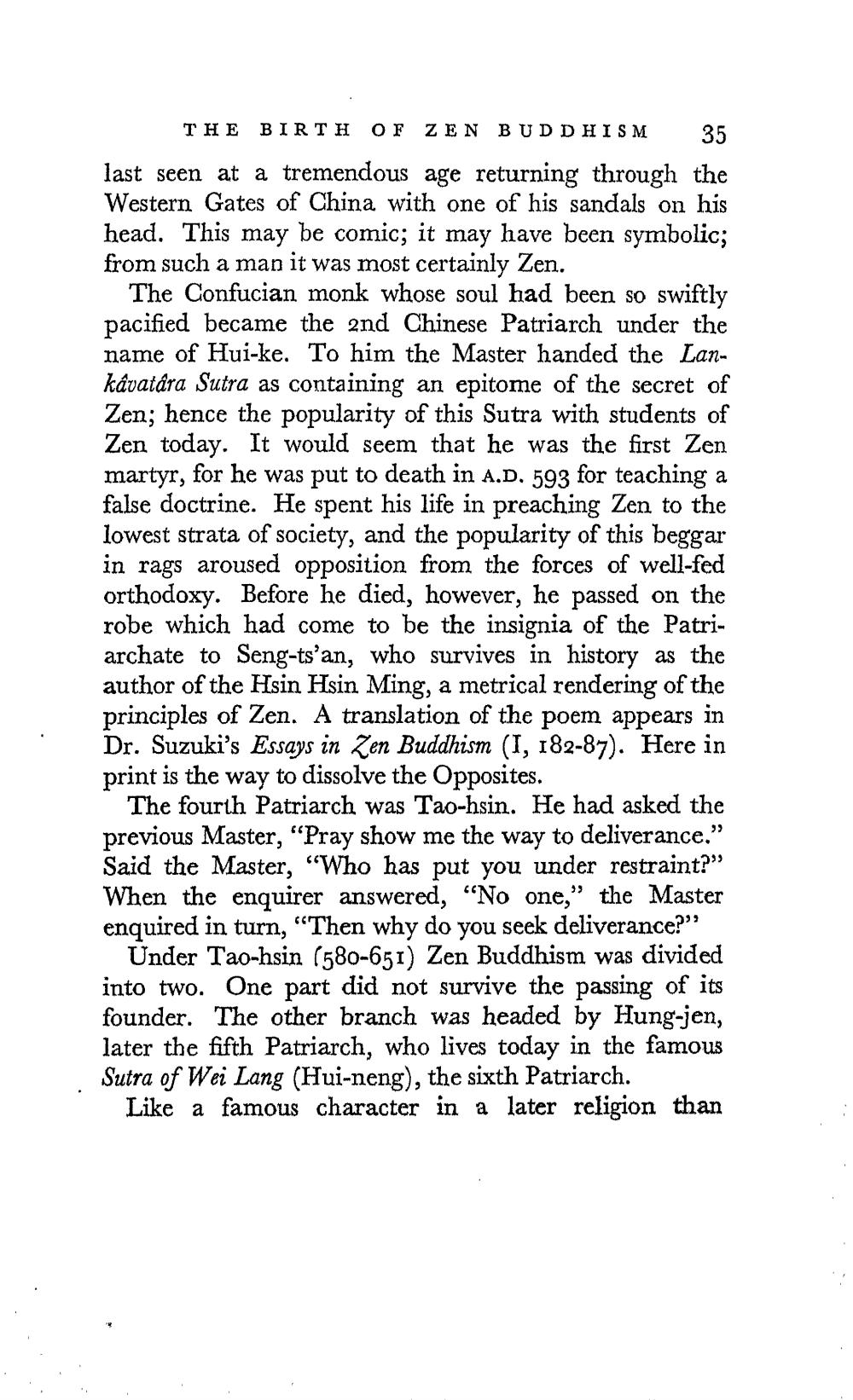________________
THE BIRTH OF ZEN BUDDHISM 35 last seen at a tremendous age returning through the Western Gates of China with one of his sandals on his head. This may be comic; it may have been symbolic; from such a man it was most certainly Zen.
The Confucian monk whose soul had been so swiftly pacified became the 2nd Chinese Patriarch under the name of Hui-ke. To him the Master handed the Lankávatára Sutra as containing an epitome of the secret of Zen; hence the popularity of this Sutra with students of Zen today. It would seem that he was the first Zen martyr, for he was put to death in A.D. 593 for teaching a false doctrine. He spent his life in preaching Zen to the lowest strata of society, and the popularity of this beggar in rags aroused opposition from the forces of well-fed orthodoxy. Before he died, however, he passed on the robe which had come to be the insignia of the Patriarchate to Seng-ts'an, who survives in history as the author of the Hsin Hsin Ming, a metrical rendering of the principles of Zen. A translation of the poem appears in Dr. Suzuki's Essays in Zen Buddhism (I, 182-87). Here in print is the way to dissolve the Opposites.
The fourth Patriarch was Tao-hsin. He had asked the previous Master, "Pray show me the way to deliverance." Said the Master, “Who has put you under restraint?" When the enquirer answered, “No one," the Master enquired in turn, "Then why do you seek deliverance?"
Under Tao-hsin (580-651) Zen Buddhism was divided into two. One part did not survive the passing of its founder. The other branch was headed by Hung-jen, later the fifth Patriarch, who lives today in the famous Sutra of Wei Lang (Hui-neng), the sixth Patriarch.
Like a famous character in a later religion than




